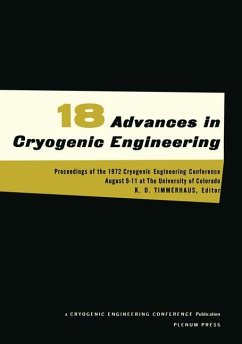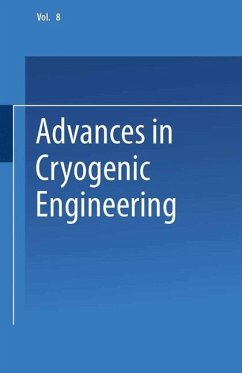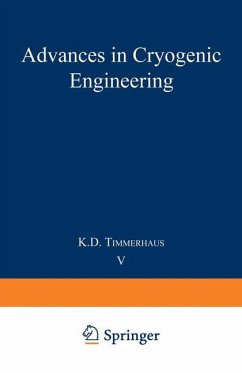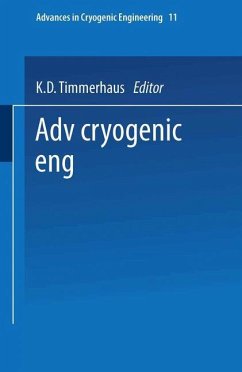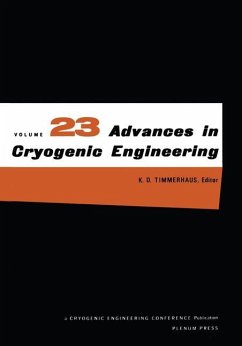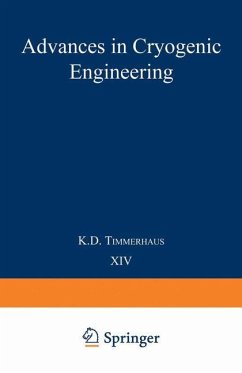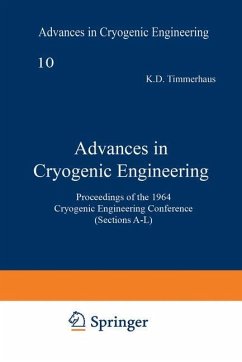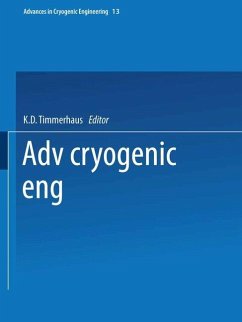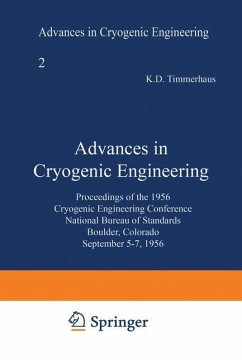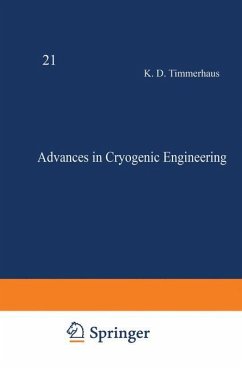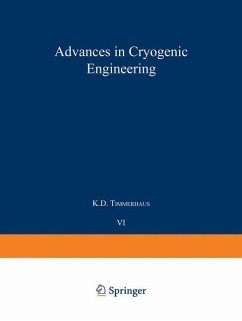
Advances in Cryogenic Engineering
Proceedings of the 1960 Cryogenic Engineering Conference University of Colorado and National Bureau of Standards Boulder, Colorado August 23-25, 1960

PAYBACK Punkte
39 °P sammeln!
The 1960 Cryogenic Engineering Conference Committee is pleased to present the papers of the 1960 Cryogenic Engineering Conference. Discussion of the papers, wherever available, has also been included to make the papers more valuable and interesting to the reader. This annual meeting once again has been held in Boulder, Colorado. Many delegates will recall that similar meetings were held in Boulder in 1954, 1956 and 1957. However, this year, because of the continued growth of this conference, the National Bureau of Standards Boulder Laboratories was joined by the College of Engineering of the U...
The 1960 Cryogenic Engineering Conference Committee is pleased to present the papers of the 1960 Cryogenic Engineering Conference. Discussion of the papers, wherever available, has also been included to make the papers more valuable and interesting to the reader. This annual meeting once again has been held in Boulder, Colorado. Many delegates will recall that similar meetings were held in Boulder in 1954, 1956 and 1957. However, this year, because of the continued growth of this conference, the National Bureau of Standards Boulder Laboratories was joined by the College of Engineering of the University of Colorado in hosting this sixth national con ference. The Cryogenic Engineering Conference Committee is happy to acknowledge the help of an Editorial Committee which contributed valuable assistance in the difficult and thankless task of screening the preliminary papers and also re viewing the final drafts. This committee headedby R. B. jacobs, who also served as chairman for the Conference Committee, consisted of R. W. Arnett, D. B. Chelton, R. J. Corruccini, T. M. Flynn, R. H. Kropschot, R. M. McClintock, A. F. Schmidt, L. E. Scott and W. A. Wilson.



